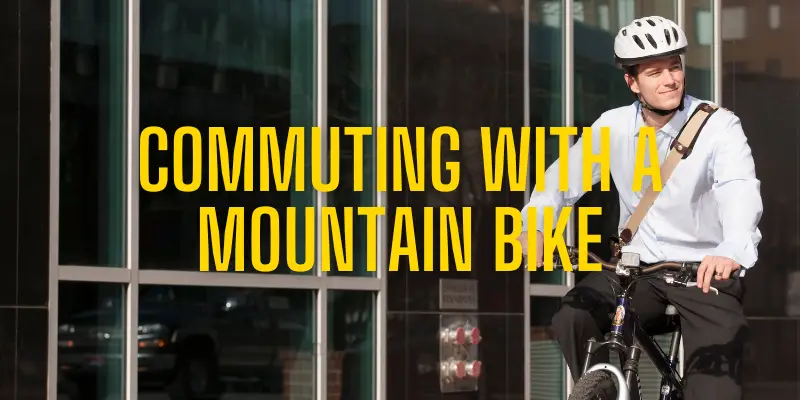Commuting with a mountain bike isn’t impossible. However, it would be best to consider your terrain when picking the right bike for commuting, as mountain bikes make a better choice for rough terrains.
If you don’t plan to ride your mountain bike on bumpy and challenging terrains, consider making basic modifications for a better and more pleasant experience.
For instance, you can replace the wide tires with narrower ones and add safety add-ons for a safer commute, such as bright lights, reflective tape, fenders, etc.
This article will help you transform your mountain bike into a lighter and faster machine for commuting with simple modifications while also sharing the pros and cons of bike commuting with a mountain bike, so let’s dive right in.
Is a Mountain Bike Good for Commuting?
A mountain bike is good enough for commuting for most people, especially if you already have one. It ensures comfort, absorbs shock well, and lasts for years. So, you will have a pleasant experience in general.

Commuting by bike has many benefits for your overall health. However, commuting with a heavy off-road bike comes with advantages and disadvantages.
Overall, a mountain bike makes a great choice for commuting if you have rough terrain in your living area (dirt trails, streets in poor condition, etc.).
Moreover, these bikes make excellent commuter bikes, thanks to their suspension. You won’t encounter problems passing potholes, dirt, broken streets, etc.
However, riding one isn’t as fast as riding a road, cyclocross, or hybrid bike. The weight, suspension, and other factors affect the bike’s speed.
Let’s discuss the key pros and cons of commuting with your mountain bike so that you can determine if it’s the right choice for you.
Suggested: MTB vs Road Bike
Pros of Commuting with Mountain Bike
Commuting with a heavy off-road bike has a few benefits, such as the following.
Stability
Wider and heavier tires provide better stability when riding around the city, especially on rough surfaces. On the other hand, regular bikes often struggle with dirt, broken streets, potholes, etc.
Comfort
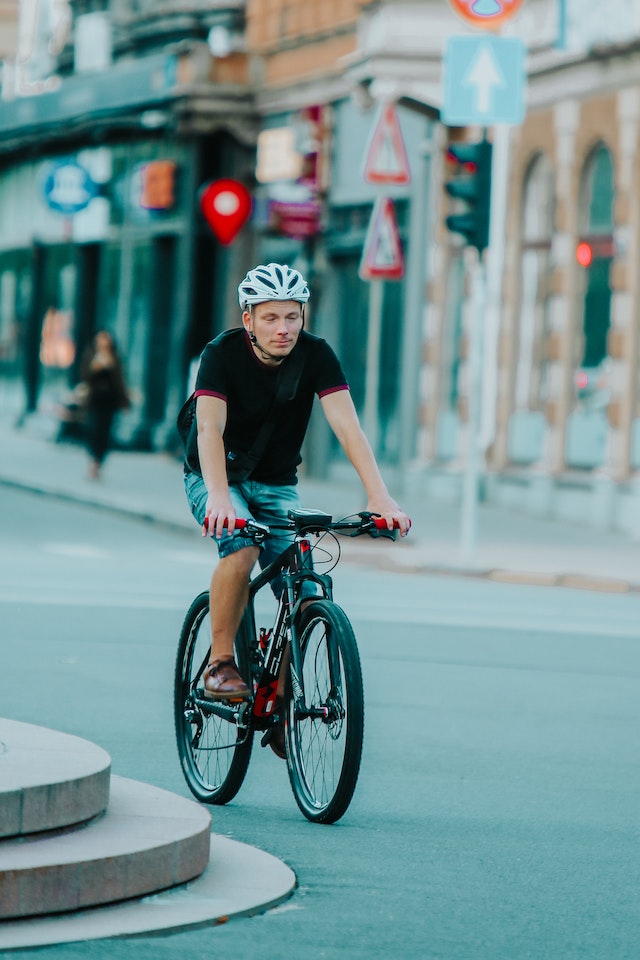
Mountain bikes were made with comfort in mind, especially when riding on rougher and bumpy surfaces.
These bikes will also protect your wrists against sudden bumps and rougher terrain. I’ve been using a heavy off-road bike for commuting for a while, and my wrists stopped hurting.
The great suspension and sturdy frame have taken the road shocks for me. Therefore, consider a mountain bike if you plan to commute to your workplace daily.
Versatility
The rugged, wide, and heavy tires reduce the risk of slipping in all types of weather. You can ride your mountain bike in the snow, rain, mud, etc.
Upgradeability
You can easily upgrade this type of bike for a better riding experience. These bikes can hold additional accessories, such as bright lights, reflective tapes, fenders, etc.
These accessories will help you transform your mountain bike into the perfect commuter bike and ensure safer riding.
Durability
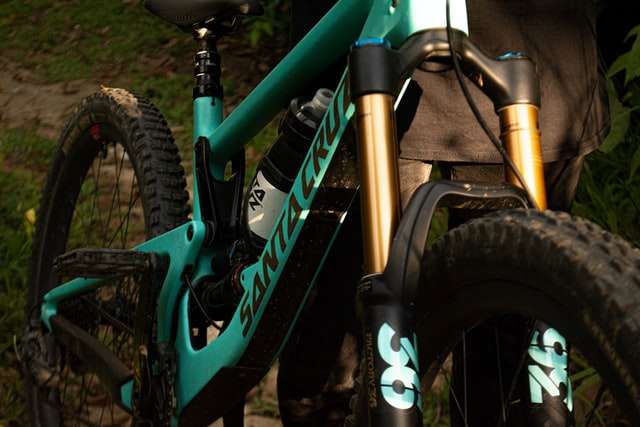
Most mountain bikes have sturdy construction. They’re well-made and durable, which is why they can handle the harsh conditions of nature.
Most towns have bumps, concrete, sharp edges, and other infrastructure that isn’t bike-friendly. Fortunately, heavier off-road bikes can take a daily beating, so they’re perfect for commuting.
Maneuverability
The long handlebars of mountain bikes provide a lot of leverage to rotate the front wheel quickly. So, you can easily make quick turns with your mtb in the city.
Maneuverability plays a key role in dodging pedestrians and making quick maneuvers in traffic.
Suggested: Full face vs open face MTB helmets
Cons of Commuting with Mountain Bike
Wear and Tear
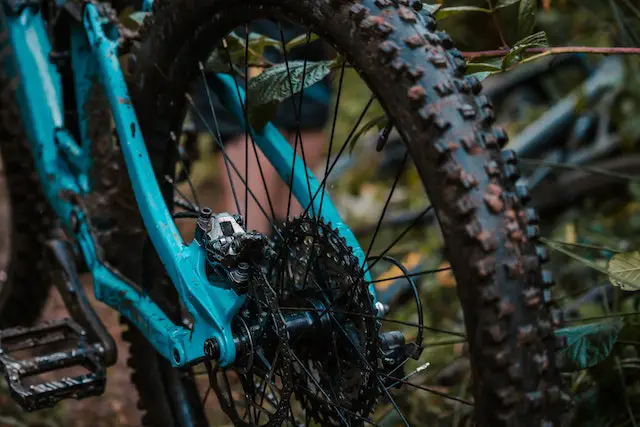
A downside of commuting with a mountain bike is the wear and tear on the tire tread. MTB tires wear faster on the road than road bike tires.
These tires work well on rocky roads, mountain slopes, and dry hills. So, they’re not the same as the tires found on regular bikes.
Let’s discuss other downsides of commuting with your mountain bike.
Weight and Size
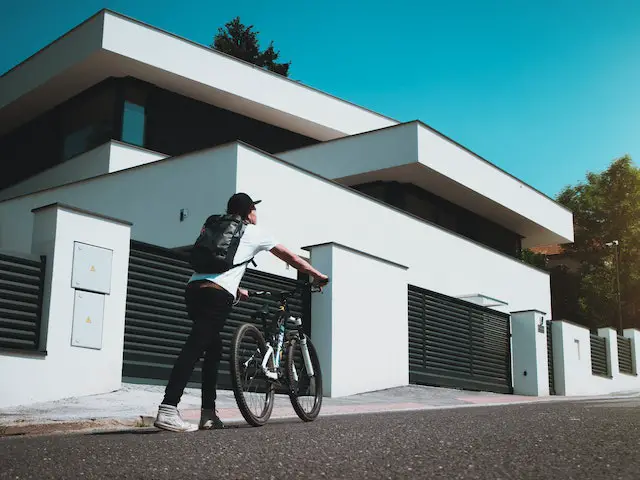
Mountain bikes aren’t lightweight. On the contrary, they’re heavy and bulky, so carrying your mountain bike up the stairs can be challenging. The same goes for riding uphill.
They also require more storage space, which can be a huge problem if you live in a smaller house or apartment.
Speed
A mountain bike won’t have the speed of a road or gravel bike because of the additional weight and aerodynamics.
Riding downhill can be fast, but easy starts aren’t possible with a mountain bike. Also, it requires more effort to move that extra weight.

Furthermore, a mountain bike will move slower on flat and straight roads because of the thick tires, aerodynamics, and weight.
So, if you need a bike for commuting long distances, consider other options. If you only need a bike that gets you to work, your mountain bike will do the job.
Appearance
Some individuals don’t like the roughness and bulkiness of mountain bikes. They’re less elegant than other bikes, such as road, gravel, and city models.
Related: Biking hand signals
Things to Consider When Commuting with a Mountain Bike
If you think commuting with your mountain bike will work, give it a try. However, if you plan to ride long distances, consider buying a commuter, leisure, or city bike.
No bike can meet the needs of everyone, so it’s a good idea to have a couple that serve different purposes.
Here’s a list of other things you should consider when commuting with your mountain bike.
Commute Distance

Before commuting to work, you should check your total biking commute distance.
For instance, you can easily commute by bike if you’re about 6-12 miles away from your workplace.
Consider using a road bike if you plan to travel longer distances. They work better than mountain bikes for longer travel because they’re faster.
Also, consider your current level of fitness before commuting to work. Some people can comfortably complete a 12-mile trip with a bike, while others can’t.
Bike Commute Accessories
If you plan to commute with your mountain bike, you should purchase a few accessories to make your riding experience safer and better.
For starters, you need good lights. Second, you need fenders to block the rain and road spray. And finally, you need a basket for your work gear.
However, don’t worry. These accessories don’t cost much. The best part? Installation is a breeze. When buying lights, you can buy a screw-clamp mount or rubber strap. These options come on and off in seconds.
As for fenders and racks, they’re slightly more complicated because they screw into tiny eyelets near the axle and farther up the frame.
Unfortunately, most mountain bikes don’t have these eyelets. However, don’t fret because I will share alternatives below.
eMTB vs. Regular MTB
If you’re considering buying a mountain bike and can’t decide between a modern eMTB and regular MTB, I can help by discussing what eMTB has that a regular MTB doesn’t.
First, most electric mountain bikes, like standard models, ensure comfort but have more power than traditional models because they feature high-powered motors.
Moreover, they pack high-quality battery packs and usually provide full suspension and more robust parts.
Lastly, electric mountain bikes make great commuter bikes because they ensure riders get to work without sweating.
Suggested: Benefits of eBikes
The downsides of these bikes include extra weight and higher prices.
If you don’t mind the additional weight and don’t have a limited budget, consider buying a modern electric bike and make commuting easier.
However, if you’re on a budget and prefer something lighter, stick with a regular model, as normal mountain bikes still make excellent commuter bikes.
Lighting
Most mountain bikes don’t have all the necessary lights for commuting. So, you should ensure that it has the following lights:
- Red or orange reflectors at the rear of your bicycle
- Amber or orange reflectors on the front and rear sides of the pedals
- White front and red back lights for commuting after sunset or in poor visibility.
Suggested: Mountain bike vs road bike helmets
How to Make Commuting with a Mountain Bike More Comfortable?
You can make commuting with your mountain bike more comfortable by installing a few accessories, such as the following.
Mudguards
Some MTbs have fenders, some don’t.
However, if you ride your mountain bike to work on rainy days, the large wheels of your bike can throw splashes and mud at your clothes.
You can quickly solve this problem by installing front and rear mudguards. These parts don’t cost much and take only minutes to install with basic tools.
New Slick Tires
Mountain bikes have thick tires that provide a higher grip to the ground and better control over the ride. However, these tires don’t perform well on smooth tracks because they’re made with tough terrains in mind.
Also, thick tires increase the weight of the mountain bike. Therefore, I suggest replacing your mountain bike’s wide tires with MTB road tires.
I also suggest buying puncture-proof tubes for better results. If you’re unsure what type of tires to choose for your mountain bike, call your local mechanics for advice.
Tire Pressure
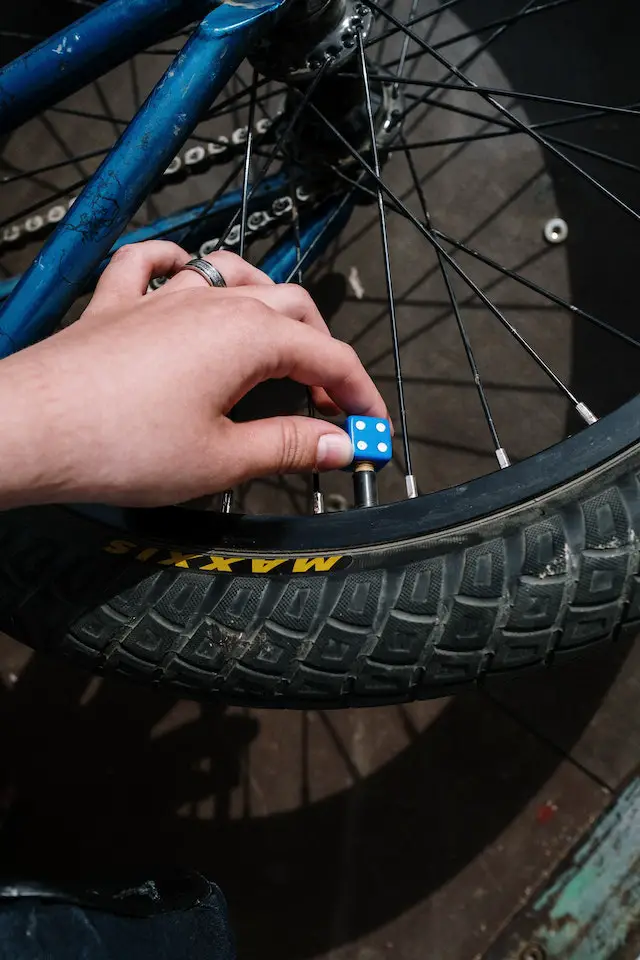
Tire pressure can affect your riding experience. Therefore, ensure you find the ideal tire pressure depending on your weight, the bicycle’s weight, and rolling resistance.
You should pump the tires to higher pressures in dry weather conditions to reduce the rolling resistance. Increasing the tire pressure offers smoother and faster riding in these conditions.
MTB manufacturers recommend around 50 psi for riding MTB on road and around 30 psi for off-roading.
Rack and Visibility Accessories
Mountain bikes don’t usually come with a rear rack. However, if you ride your mountain bike to work, you will need a place for your laptop and other work items.
You can quickly solve this issue by installing a generic or custom-made rack behind the saddle or on the sides of the wheels.
Also, don’t forget other accessories, like reflector bands, a reflective vest, a bike bell, a helmet, and a reflective rain jacket.
New Pedals
If you have a mountain bike with pedals only suitable for professional footwear, consider buying new ones. Otherwise, you won’t be able to ride with your usual footwear.
You can install clipless or flat pedals for better control.
Commuting With a Mountain Bike: FAQs
Are Mountain Bikes Fast?
Mountain bikes ride fast on rough terrain but don’t deliver top speed on smooth ones because of their weight, wider wheels and tires, and extra treads.
Are Mountain Bikes Good for Longer Distances?
Mountain bikes work well for longer travels on rough surfaces. Their suspension and wide seats provide long range comfort. However, they’re not the best option for traveling longer distances on clean, dry roads if speed is your major concern because they are slower in pavement.
Are Mountain Bikes Harder to Ride?
They’re harder to ride than regular bikes but provide comfort on rough surfaces. A mountain bike’s sturdy construction and size work the upper body more than a regular bike. Also, riding a mountain bike uphill works the arms, calves, and quads.
Related: What muscles does mountain biking work?
Conclusion: Final Tips for a Safe Mountain Bike Commuting

In a nutshell, commuting to work daily on your mountain bike is a great choice if you add the necessary accessories and don’t mind the deterioration of the tread.
Here’s a list of safety tips when commuting with your mountain bike, or any bike, for that matter.
- Always carry a water bottle.
- Get attention at intersections by looking drivers in the eye.
- Always lock your mountain bike, especially if you live in a high-crime area.
- Stand on the pedals in parking lots or heavy traffic so drivers see you better.
- Always have a spare tube and a pump when riding longer distances.
- If you’ve never ridden a bike to work, make a test run during the weekend to see if you like the experience.
- If necessary, pack a towel, spare clothing, wet wipes, etc.
- Check the brakes and tire pressure before hitting the road.
- Check the weather forecast and bring protective gear if necessary.
Hopefully, the guide above can help you determine if commuting with your mountain bike is the right choice.

